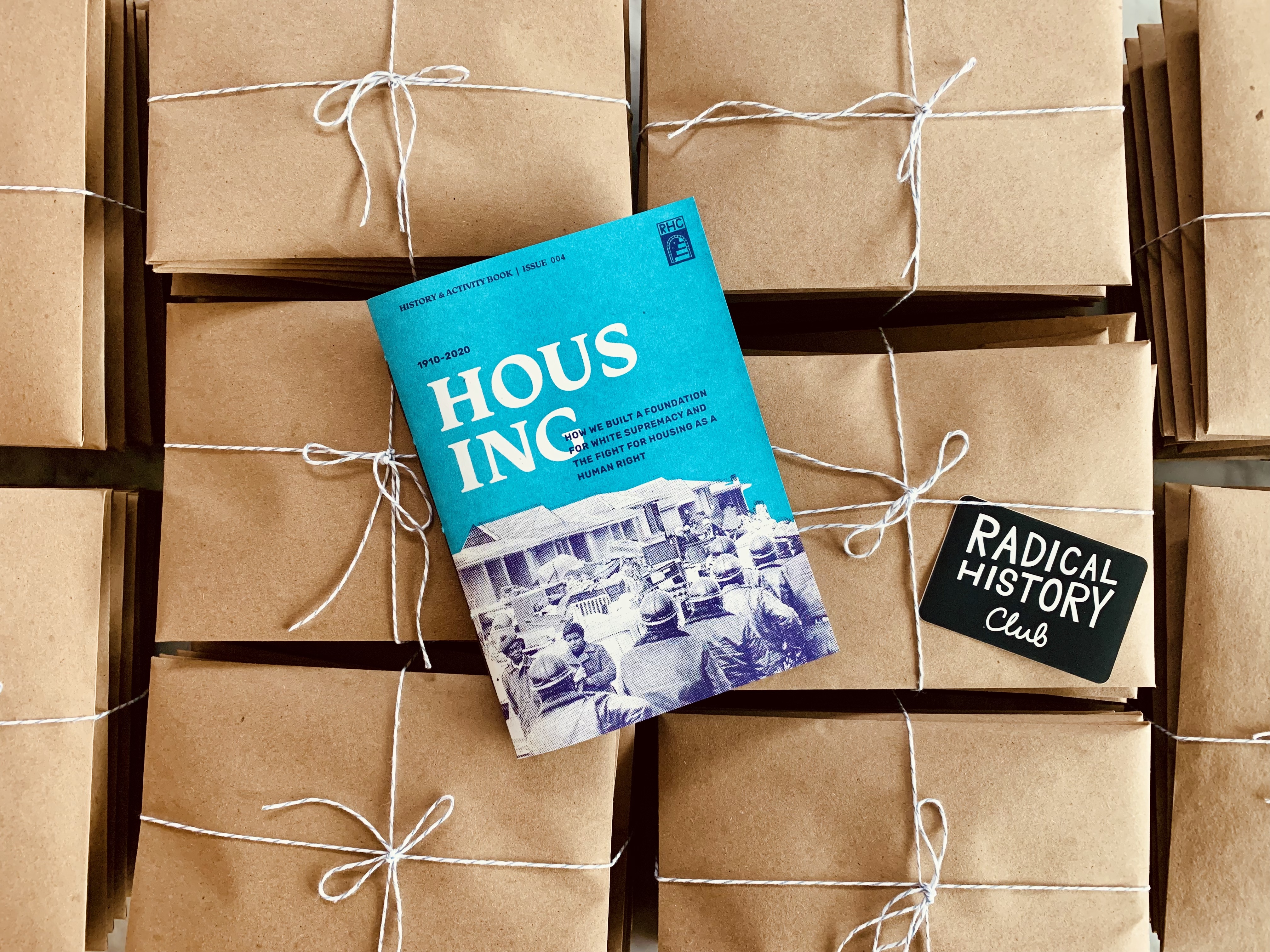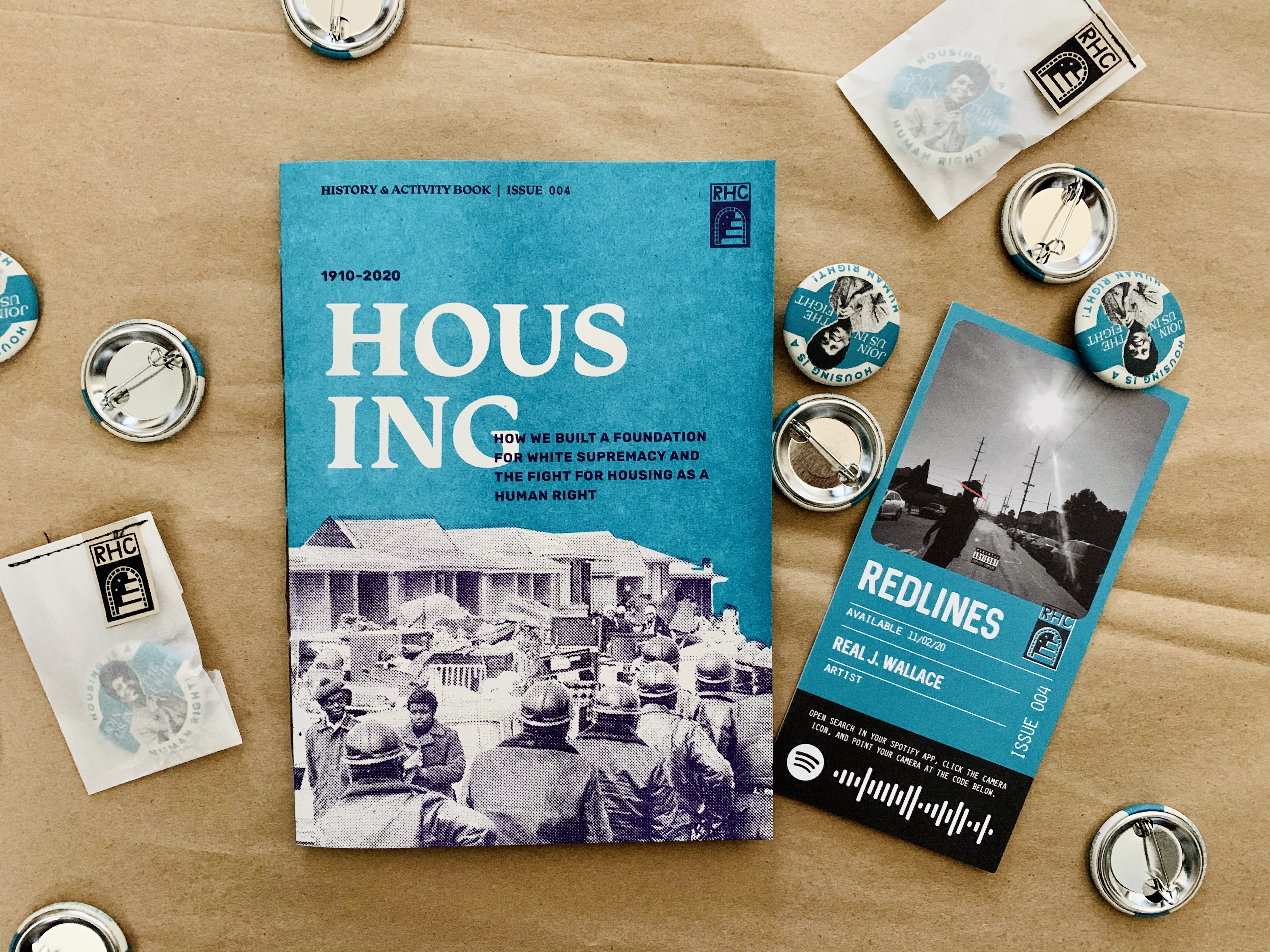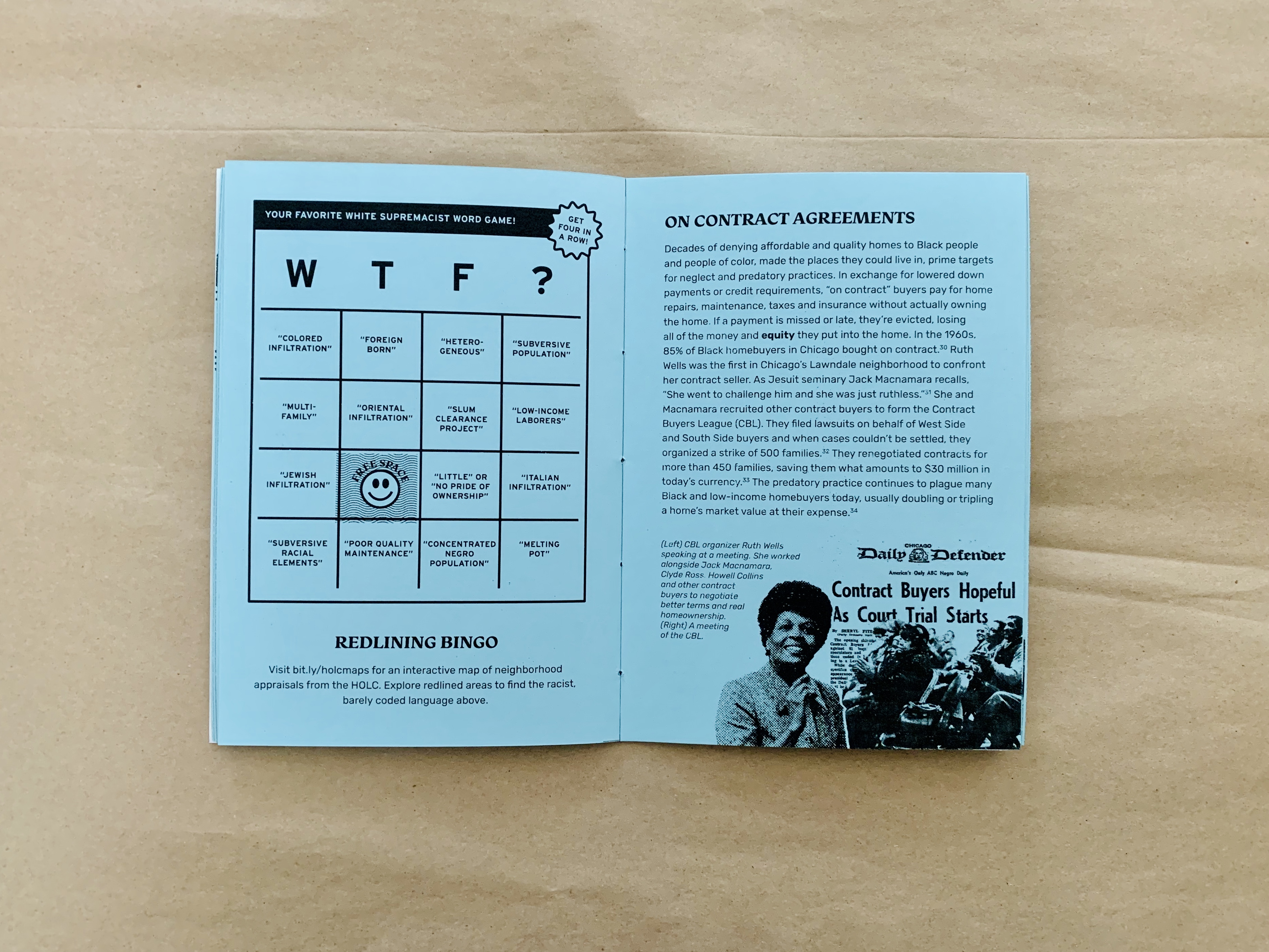
My zine Radical History Club started as a way to challenge the colonizer, anti-Black and capitalist histories glorified by US textbooks. Each issue is an illustrated history lesson that breaks down a moment in US history from the perspective of oppressed peoples through the lens of their resistance.
For this issue on housing, I particularly struggled with researching and explaining home ownership in the US. The historical roots of home ownership is intentionally mystified and murky, so power can be continually hoarded by some, leaving others in poverty. But after some adjustments to the organization of the narrative, I was able to explain how housing impacts our safety, discuss the foundations of white supremacy in housing, and highlight ordinary people who have and continue to resist this injustice in just 20 illustrated pages. By using section headers, historical photos and illustrations I was able to distill a narrative from months of research that could be read in one sitting.
I was also able to design a redlining bingo game in which readers could look at redlining map language online and find thinly veiled racist statements on the board. Originally the issue was set to focus on the history of redlining, but through my research I discovered this was just one iteration in a multitude of disastrous designs to maintain white wealth on stolen land at the expense of everyone else, especially Black people. It was imperative to highlight the events before (like the privatization of land) and after (like the profiteering of evictions).

With every issue, I contract 3-5 educators, community organizers and/or elders from the communities discussed to ensure that the narrative is reflective of their diverse experiences. One housing organizer expressed the importance of connecting the stealing of Indigenous land to housing in the US. I hadn’t even thought of that connection before, and I made sure to weave this in as much as I could. I also collaborated with local hip-hop artist Real J. Wallace who produced a beautiful song called, “Redlines,” included as a listening ticket in each issue. If I could do this project again, I would love to create an interactive map that combines the historical records of redlining with historical context of the Indigenous lands that housing tracts are built upon.
Special thanks to Issue 004 contributors
- Ramel Wallace, CEO of The Holyfield
- Daqiquiri Jones, organizer and storyteller
- Ed Nuñez, critical pedagogue
See more issues at radicalhistoryclub.com.

